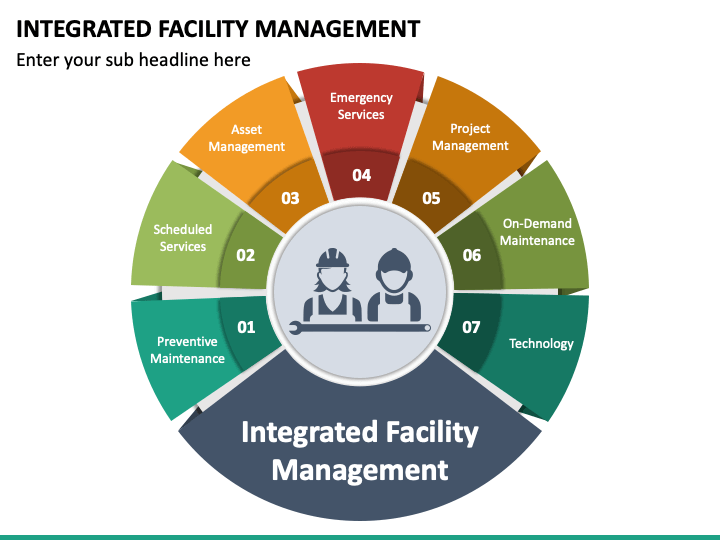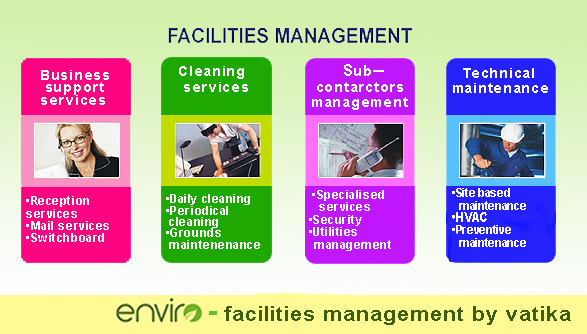The Necessary Guide to Center Management: Techniques for Success
Facility administration plays an essential role in the total success of a company, acting as the foundation that supports performance, safety, and performance. By employing critical techniques such as incorporated technical solutions and fostering cross-departmental cooperation, organizations can substantially boost their operational foundations. However, the subtleties of reliable facility monitoring prolong past plain logistics and need a comprehensive understanding of both quantitative and qualitative metrics. As we discover these vital strategies, a closer examination discloses how they can change not simply centers, yet the actual society within a company itself. What might these transformations resemble in practice?
Recognizing Facility Management
What makes up reliable center monitoring? Effective center administration incorporates the coordination of various business functions to make sure that developed settings are risk-free, reliable, and for productivity. Facility Management. It integrates the concepts of design, design, and service monitoring to create a smooth operational circulation within a company
Trick elements of center monitoring consist of area preparation, upkeep management, and conformity with health and wellness guidelines. Space planning focuses on optimizing making use of physical sources to support organizational objectives, while maintenance management makes certain that facilities are maintained in ideal problem, optimizing lifespan and reducing operational prices. Conformity with regulative and lawful criteria is essential, as it safeguards the organization versus potential responsibilities and enhances its track record.
In addition, reliable center monitoring depends on the tactical use modern technology, such as Structure Management Systems (BMS) and Computer-Aided Facility Administration (CAFM) devices. These modern technologies assist in real-time tracking of building systems and streamline upkeep processes. Inevitably, a thorough technique to facility monitoring not just advertises functional effectiveness but additionally promotes a favorable atmosphere for visitors and staff members alike, driving general organizational success.
Key Techniques for Optimization
Maximizing center management needs a calculated strategy that straightens functional practices with business objectives. To accomplish this, the first essential approach is the execution of incorporated technical options. Utilizing advanced software program systems enables real-time surveillance of center operations, helping with data-driven decision-making and improving overall efficiency.
Secondly, regular assessments of center performance are vital. Performing regular examinations and audits enables center managers to recognize locations that require improvement, guaranteeing that resources are alloted successfully. This positive method assists in minimizing downtime and improving solution distribution.
One more essential strategy is fostering partnership throughout divisions. By encouraging open interaction between teams, facility managers can better straighten their techniques with organization objectives, resulting in improved operational synergy. Additionally, involving staff in training programs promotes a society of liability and enhances their capacity to add to optimization initiatives.
Enhancing Safety And Security Methods
Enhancing safety methods is vital for producing a secure environment within centers. A detailed security method not just secures visitors and staff members but additionally improves functional efficiency. To achieve this, facility managers need to perform normal threat evaluations to determine potential dangers and guarantee that ideal steps are in area.
Training and education and learning are critical components of reliable safety procedures - Facility Management. Workers need to receive continuous training in emergency situation treatments, devices handling, and individual safety procedures. Normal drills, such as fire discharges or lockdown procedures, foster experience and preparedness amongst staff
Furthermore, clear interaction channels should be developed to report read more safety and security concerns promptly. This consists of developing an available system for workers to articulate possible hazards or cases without anxiety of reprisal. Furthermore, leveraging modern technology can improve security procedures; as an example, implementing security systems and accessibility controls helps check center activities here and restrict unauthorized entry.
Lastly, compliance with neighborhood policies and industry requirements is non-negotiable. Normal audits and testimonials of safety procedures make sure positioning with current regulations and best methods. By prioritizing these strategies, facility managers can cultivate a society of safety that shields all stakeholders and ultimately adds to the organization's success.
Improving Workplace Environment

Ergonomic considerations are important to reduce physical stress and pain. Facility Management. This involves offering flexible furnishings, proper lights, and sufficient space for movement. These adjustments can cause lowered absenteeism and enhanced work complete satisfaction
Visual appeals play a vital function fit the work environment environment. Making use of shade psychology, all-natural illumination, and greenery can promote a stimulating and inviting atmosphere. Attentively made rooms can increase imagination and improve general well-being.
Moreover, encouraging employee interaction via comprehensive decision-making procedures can enhance the feeling of ownership and belonging. Collecting feedback on workplace enhancements and involving employees in the design process can lead to an extra tailored environment that meets their demands.
Last but not least, advertising health initiatives, such as health cares and relaxation areas, can better add to an encouraging office society. By focusing on these methods, center managers can successfully improve the office environment, driving both worker satisfaction and organizational success.
Measuring Success in Facilities
Measuring success in center administration needs a comprehensive strategy that reviews both measurable and qualitative metrics. Quantitative metrics usually include key efficiency indications (KPIs) such as area utilization rates, power intake, maintenance prices, and tenancy degrees. These metrics offer a clear image of functional efficiency and financial efficiency, enabling center managers to identify areas for improvement and criteria against market requirements.
Qualitative metrics, on the other hand, concentrate on individual satisfaction and worker interaction. Studies and feedback systems can gauge how well the facilities meet the demands of occupants, assisting to analyze the general office environment. This aspect is important, as a pleased labor force is usually connected to enhanced productivity and retention prices.
To successfully measure success, center managers should likewise think about integrating modern technology, such as constructing administration systems and data analytics devices, to gather and examine pertinent data. Consistently assessing both sets of metrics enables an extra balanced sight of performance and notifies strategic choices. Eventually, a successful facility management method hinges on a commitment to continual enhancement, making certain that both operational efficiencies and customer fulfillment are prioritized.
Verdict

Center monitoring plays an important role in the overall success of an organization, offering as the backbone that sustains here safety and security, efficiency, and efficiency.Secret aspects of center management consist of room preparation, upkeep monitoring, and conformity with health and wellness and safety regulations.Moreover, effective center administration counts on the strategic usage of innovation, such as Building Management Systems (BMS) and Computer-Aided Center Management (CAFM) devices. Inevitably, a detailed method to facility management not only advertises operational efficiency but likewise fosters a positive atmosphere for staff members and site visitors alike, driving overall organizational success.
Eventually, an effective center monitoring strategy pivots on a dedication to continuous improvement, making sure that both operational effectiveness and user contentment are prioritized.